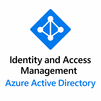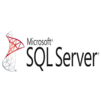.jpg)
The Microsoft Customer Data Platform Specialty (MB-260) course is designed to help professionals unify, manage, and activate customer data using Microsoft Customer Insights. Participants will learn how to implement data ingestion, identity resolution, segmentation, enrichment, and insights-driven actions. The course also covers integration with Microsoft Dynamics 365 and Power Platform, enabling personalized engagement. Ideal for data professionals seeking to deliver impactful, customer-centric solutions through unified data intelligence.
Microsoft Customer Data Platform Specialty MB-260 Training Interview Questions Answers - For Intermediate
1. How can organizations use Customer Insights to personalize customer experiences?
Organizations can leverage Customer Insights to create detailed customer profiles, which include behavioral, transactional, and demographic data. These profiles help in understanding customer preferences and predicting future behavior. Using AI-driven recommendations and real-time segmentation, businesses can deliver targeted content, product offers, and support. This level of personalization enhances customer satisfaction and drives loyalty.
2. What are customer cards in Customer Insights, and how are they used?
Customer cards in Customer Insights are visual representations of unified customer profiles. They present a snapshot of customer data, including recent activities, KPIs, and engagement history. These cards can be embedded in Dynamics 365 apps like Sales or Customer Service, enabling agents to access contextual data quickly. It improves efficiency and helps provide personalized interactions.
3. What is the difference between a unified profile and a segment in Customer Insights?
A unified profile is a single, comprehensive view of a customer created by merging data from various sources. It contains all relevant attributes, interactions, and relationships. A segment, on the other hand, is a group of customers filtered based on shared characteristics or behaviors derived from those profiles. Segments are dynamic or static groupings used for targeted campaigns and analysis.
4. What are calculated fields in Customer Insights, and how do you create them?
Calculated fields are custom fields derived from existing data using expressions or logic. They allow users to create new metrics such as age from birthdate or total purchase value from transactions. Calculated fields are built using Power Query during data transformation. These enrich the unified profiles and can be used in segments, measures, and reports.
5. How does Customer Insights handle real-time updates or data refreshes?
Customer Insights supports scheduled refreshes for data ingestion and profile updates, typically done daily or at defined intervals. While it doesn't natively support real-time streaming, it can ingest near-real-time data through Azure Event Hubs or Logic Apps. Refresh configurations help ensure data remains current for segmentation and reporting. Integration with Power Automate also enables real-time workflows.
6. Can you explain the role of Power Platform in extending Customer Insights functionality?
The Power Platform (Power BI, Power Apps, Power Automate, Power Virtual Agents) enhances Customer Insights by enabling visualization, automation, and app creation. Power BI can be used to build advanced dashboards with Customer Insights data. Power Automate helps automate workflows like sending notifications based on segmentation. Power Apps allows building custom interfaces leveraging unified profiles.
7. How does Customer Insights support B2B scenarios?
While Customer Insights is often used in B2C contexts, it also supports B2B use cases through organizational entity modeling. Companies can create relationships between contacts and accounts, map company-level transactions, and build segments for accounts rather than individuals. Unified profiles can be designed for businesses, enabling account-level insights, personalized outreach, and strategic decision-making in B2B environments.
8. What types of connectors are available in Customer Insights for data ingestion?
Customer Insights provides out-of-the-box connectors for Dataverse, Azure Blob Storage, Azure Data Lake, Dynamics 365, Power BI datasets, SQL Server, SharePoint, and more. Custom connectors can also be built using Power Query or APIs. These connectors enable businesses to bring in structured and semi-structured data from diverse systems into the CDP for unification and analysis.
9. How do you use suppression segments in Customer Insights?
Suppression segments are used to exclude specific customer groups from certain campaigns or processes. For example, customers who have opted out of marketing can be placed in a suppression segment. These segments ensure compliance with privacy regulations and improve campaign efficiency by targeting only the relevant audience. Suppression logic can be applied in export settings.
10. What is role-based access control (RBAC) in Customer Insights?
RBAC in Customer Insights defines what actions users can perform based on their assigned roles. It ensures that only authorized individuals can access, modify, or export customer data. Admins can assign roles like Data Admin, Viewer, or Contributor with specific permissions. RBAC enhances security, compliance, and operational control within the CDP environment.
11. What’s the benefit of linking Customer Insights with Azure Synapse Analytics?
Integrating Customer Insights with Azure Synapse enables powerful analytics on unified customer data. It allows users to run advanced queries, build machine learning models, and visualize insights beyond standard CDP capabilities. Synapse provides scalability and supports big data processing for deep behavioral analysis, predictive modeling, and custom reporting, all using Customer Insights data.
12. How can you validate match rules during identity resolution?
Customer Insights provides a Match rule validation tool that allows users to test their rules before applying them. This tool displays how many records match under each condition and helps fine-tune thresholds. Users can preview matched profiles to ensure accuracy and minimize false positives or negatives. This validation step is essential for effective identity resolution.
13. What’s the difference between enrichment from third-party data and custom enrichment?
Third-party enrichment uses external data providers (like LinkedIn, Bing) to add new insights to existing customer profiles, such as industry or social information. Custom enrichment involves integrating proprietary or internal data sources, possibly using APIs or Power Platform tools. Both methods enhance the profile's value, but custom enrichment allows more control and domain-specific augmentation.
14. What is audience insights export in Customer Insights, and how is it used?
Audience insights export enables users to export segments, measures, or unified profiles to downstream systems. This can include Azure Data Lake, Dynamics 365 Marketing, or external systems via APIs. The exported data can be used for marketing campaigns, personalization, or further analytics. It’s a key feature that bridges insight generation with action.
15. How do you manage data retention and privacy in Customer Insights?
Customer Insights doesn’t store data indefinitely; users must define data retention policies based on compliance needs. Data sources can be regularly refreshed or removed, and unified profiles updated accordingly. For privacy, organizations must ensure data usage aligns with consents and regulations like GDPR. Encryption, access controls, and audit logs help protect and govern customer data effectively.
Microsoft Customer Data Platform Specialty MB-260 Training Interview Questions Answers - For Advanced
1. How does Microsoft Customer Insights support multi-brand or multi-tenant organizations in building unified customer views?
Customer Insights supports multi-brand or multi-tenant scenarios through flexible data modeling and segmentation capabilities. Organizations can ingest and manage data from multiple brands or subsidiaries, tagging records with brand-specific identifiers to distinguish customers across business units. Identity resolution can be configured with match rules that account for brand scopes—e.g., matching only within the same tenant or selectively across brands if global unification is desired. Segments and unified profiles can then be scoped or filtered based on brand ownership, enabling personalized engagement strategies per brand while still maintaining a centralized view. Role-based access control (RBAC) allows users to see only brand-relevant data, preserving data privacy and operational boundaries. This makes Customer Insights suitable for large enterprises managing multiple customer bases under a single umbrella with both shared and exclusive data needs.
2. Explain how custom machine learning models can be integrated with Customer Insights for advanced analytics.
Customer Insights offers flexibility to integrate custom machine learning (ML) models through its export features and Azure ecosystem. Unified customer data can be exported to Azure Data Lake, then connected to Azure Machine Learning or Azure Synapse Analytics for advanced ML modeling. Data scientists can train and deploy models—such as lifetime value prediction, churn scoring, or sentiment analysis—using familiar tools like Python, R, or Azure ML Studio. Once predictions are generated, results can be re-ingested into Customer Insights as new attributes or measures. These enriched insights become part of the unified profile and can power dynamic segments or campaigns. The entire process can be automated with Azure Data Factory or Power Automate for continuous learning and application. This integration enables organizations to apply domain-specific AI logic while leveraging Customer Insights as the central hub for customer intelligence.
3. What are the key differences between activity entities and profile entities in Customer Insights?
In Customer Insights, profile entities represent static, descriptive data about the customer—such as name, email, address, and demographic information. These serve as the foundation for unified profiles created during identity resolution. Activity entities, on the other hand, capture dynamic, event-based interactions—like purchases, website visits, support tickets, or product returns. They are time-series records that provide behavioral insights over time. While profile entities are used primarily for segmentation based on customer characteristics, activity entities allow for analysis of trends, recency, frequency, and engagement patterns. Measures and KPIs often derive from activity entities (e.g., total number of purchases), while profile entities help in identity resolution and demographic segmentation. Understanding and linking both types of entities is crucial for building a 360-degree customer view.
4. How do relationship definitions enhance data modeling in Customer Insights?
Relationships in Customer Insights define how different entities—such as customers, transactions, or products—are connected. Establishing these relationships allows users to perform more complex queries, analytics, and segmentation logic. For example, defining a relationship between a customer and their purchase history enables creating a segment of customers who bought a specific product category. Relationships can be one-to-one, one-to-many, or many-to-many, depending on the business model. They are essential when calculating measures that require context across tables, such as average spend per customer or number of purchases in a time window. Furthermore, relationships improve the interpretability of unified profiles by linking supporting entities (e.g., linking a support case entity to a customer). Properly defined relationships ensure accurate data lineage and holistic analytics.
5. How does Microsoft Customer Insights manage scalability when handling large volumes of data?
Customer Insights is built on a scalable Azure-based architecture, enabling it to handle large datasets efficiently. It supports parallel data ingestion, batch processing, and incremental updates to accommodate high data volumes from CRM, ERP, POS, and third-party sources. Azure Data Lake Storage is used as the foundation for staging and storing ingested data. Additionally, the system utilizes intelligent caching and data partitioning to optimize performance during identity resolution and segmentation. Administrators can monitor performance using diagnostic tools and adjust refresh schedules to balance timeliness with resource use. The platform's API and export capabilities also support integration with enterprise-scale data warehouses and analytics platforms, ensuring that it fits into high-throughput data ecosystems. Scalability is further supported by its modular design, allowing expansion as organizational data needs grow.
6. What is the significance of data mapping during ingestion, and how should it be handled?
Data mapping is a critical step during ingestion that aligns source data fields to Customer Insights schema—either to standard entities like customer and account or to custom entities. Accurate mapping ensures that data is correctly interpreted, unified, and usable in downstream processes like identity resolution, segmentation, and enrichment. During mapping, users define data types, formats, and identifiers such as primary keys. Errors in mapping can result in failed ingestion, duplicate records, or incorrect profile associations. Power Query helps transform data before mapping, allowing cleansing operations like trimming whitespace or converting data types. Best practices include consistent naming conventions, use of reference data for standardization (e.g., ISO country codes), and versioning schema changes for traceability. Ultimately, data mapping forms the backbone of trustworthy insights in the platform.
7. How does Customer Insights support campaign orchestration across multiple channels?
While Customer Insights does not directly manage campaign orchestration, it integrates seamlessly with tools like Dynamics 365 Marketing, Adobe Campaign, and custom applications via APIs to power personalized campaigns. Segments and measures from Customer Insights can be exported to these systems in real time or on a scheduled basis. For example, a segment of high-value customers can be sent to Dynamics 365 Marketing, which then triggers a multichannel campaign across email, SMS, and social media. The integration ensures consistent use of customer profiles and segmentation logic across platforms. Additionally, Customer Insights can be used in conjunction with Power Automate to trigger automated workflows, such as sending thank-you emails after a purchase. These orchestration workflows ensure that customer engagement is timely, relevant, and based on unified insights.
8. What’s the difference between static and dynamic segments in Customer Insights, and when should each be used?
Static segments are snapshot-based and capture a list of customers at the time the segment is created. They remain unchanged unless manually refreshed. They are useful for one-time campaigns, historical analysis, or reporting purposes. Dynamic segments, on the other hand, are rule-based and update automatically as the data changes—ensuring real-time targeting. For example, a dynamic segment can continuously include customers with an active churn risk score. Dynamic segments are ideal for ongoing campaigns, lead nurturing, and lifecycle automation. Choosing between the two depends on the use case: static segments provide stability and repeatability, while dynamic segments support personalization and responsiveness. Customer Insights allows converting dynamic segments into static ones for archiving or compliance.
9. How can Power BI be used to visualize and share insights from Customer Insights?
Power BI integrates natively with Customer Insights, enabling users to build custom dashboards and reports using unified profile data, measures, and segments. Customer Insights provides a direct connector for Power BI to access exported datasets via Azure Data Lake. Analysts can create visualizations that showcase customer demographics, behavior patterns, churn risks, and marketing performance. Reports can be filtered by segments and shared with business teams for decision-making. Embedding Power BI dashboards within Dynamics 365 or custom apps enhances data accessibility across the organization. Power BI also supports scheduled refreshes, role-based access, and drill-down capabilities, making it a powerful visualization layer on top of the Customer Insights CDP. The integration empowers non-technical users to derive meaning from data without leaving their business tools.
10. How does Customer Insights help in reducing data silos within an enterprise?
Customer Insights centralizes customer data from multiple systems—CRM, ERP, support, e-commerce, and more—into a unified view, effectively breaking down silos. By ingesting and unifying disparate data sources, the platform ensures that all departments work from a shared customer profile rather than fragmented records. Identity resolution reconciles data even when different systems use different identifiers, enabling holistic analysis. This unified data can be used consistently across sales, marketing, service, and executive dashboards. Additionally, APIs and connectors allow data to flow bi-directionally between Customer Insights and other enterprise systems, maintaining synchronization. By reducing silos, organizations improve collaboration, streamline operations, and deliver consistent customer experiences across all channels.
11. Describe how consent and preference data should be integrated and enforced in Customer Insights.
Although Customer Insights does not natively manage consent, it allows organizations to ingest and respect consent and preference data from external systems such as CRMs, preference centers, or consent management platforms (CMPs). Consent status—like marketing opt-in, data sharing approval, or contact preferences—can be ingested as attributes or linked entities. Segments can then be filtered to exclude customers without valid consent, ensuring legal compliance (e.g., GDPR, CCPA). Export and activation workflows should also reference this data to prevent non-compliant outreach. Organizations are encouraged to implement consent logic during data ingestion or within Power Automate flows. Regular audits and integration with CMPs ensure data accuracy and regulatory adherence. Ultimately, treating consent as a first-class data citizen helps balance personalization with privacy.
12. What is the impact of poor match rules during identity resolution, and how can you mitigate it?
Poorly configured match rules can result in under- or over-matching of customer records. Under-matching leads to fragmented profiles, where multiple records for the same customer remain separate, degrading personalization and insights. Over-matching can wrongly combine different individuals into one profile, causing privacy violations and inaccurate targeting. To mitigate this, users should define multiple layered match rules, use fuzzy matching cautiously, and validate rules using preview tools. It's important to test match logic on sample datasets and monitor match quality metrics regularly. Including unique identifiers like customer IDs or loyalty numbers improves accuracy. Periodic review and refinement of match rules are essential, especially when data sources evolve. Identity resolution must strike a balance between completeness and correctness.
13. How can you leverage Customer Insights in a customer journey optimization initiative?
Customer Insights can be used to map, measure, and improve customer journeys by analyzing data across all touchpoints. Unified profiles reveal key behaviors and pain points—like abandoned carts, long support wait times, or repeat product returns. Segments based on journey stage or activity frequency allow for precise targeting (e.g., onboarding vs. retention). Measures like time since last purchase or service satisfaction score can be used to identify drop-off points. These insights feed into marketing automation platforms or CRMs to trigger personalized content, retargeting ads, or service calls. AI models further enhance journey optimization by predicting next best actions or likely churn points. With Customer Insights, organizations can move from reactive to proactive customer engagement.
14. In what ways does Customer Insights promote cross-functional collaboration in an organization?
Customer Insights serves as a central hub of unified customer intelligence, fostering collaboration across marketing, sales, service, and analytics teams. Marketers use segments for campaign targeting, sales teams use unified profiles for contextual engagement, and customer service uses behavioral data to tailor interactions. Data scientists can build models using exported data, while executives rely on Power BI dashboards to track KPIs. The ability to share insights via APIs, dashboards, or embedded customer cards ensures that each function works from the same customer truth. Role-based access ensures secure collaboration without exposing sensitive data unnecessarily. By aligning teams around consistent data, Customer Insights eliminates fragmentation and enhances organizational synergy.
15. What is your approach to implementing Microsoft Customer Insights in a phased rollout for a large enterprise?
A phased rollout starts with defining clear objectives aligned with business goals—such as improving retention or campaign performance. The first phase typically involves data audit and ingestion, prioritizing high-value sources like CRM or e-commerce. Next is the unification and identity resolution phase, where match rules and profile completeness are tested. The third phase focuses on segmentation, measures, and enrichment, enabling targeted campaigns and analytics. Parallel to this, integration with downstream systems (e.g., Dynamics 365 Marketing, Power BI) should be established. Pilot use cases are implemented in one business unit before scaling enterprise-wide. Throughout, stakeholder training, data governance, and change management are crucial. Feedback loops and KPIs guide refinement and expansion in subsequent phases, ensuring the deployment delivers measurable business value.
Course Schedule
| Nov, 2025 | Weekdays | Mon-Fri | Enquire Now |
| Weekend | Sat-Sun | Enquire Now | |
| Dec, 2025 | Weekdays | Mon-Fri | Enquire Now |
| Weekend | Sat-Sun | Enquire Now |
Related Courses
Related Articles
Related Interview
Related FAQ's
- Instructor-led Live Online Interactive Training
- Project Based Customized Learning
- Fast Track Training Program
- Self-paced learning
- In one-on-one training, you have the flexibility to choose the days, timings, and duration according to your preferences.
- We create a personalized training calendar based on your chosen schedule.
- Complete Live Online Interactive Training of the Course
- After Training Recorded Videos
- Session-wise Learning Material and notes for lifetime
- Practical & Assignments exercises
- Global Course Completion Certificate
- 24x7 after Training Support









 Join our Live Instructor-Led online classes delivered by industry experts
Join our Live Instructor-Led online classes delivered by industry experts